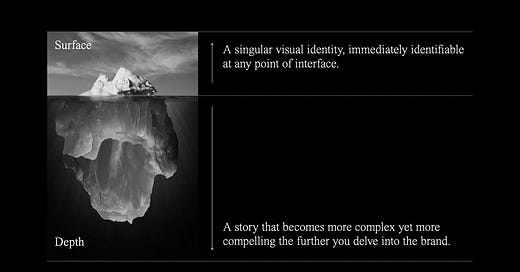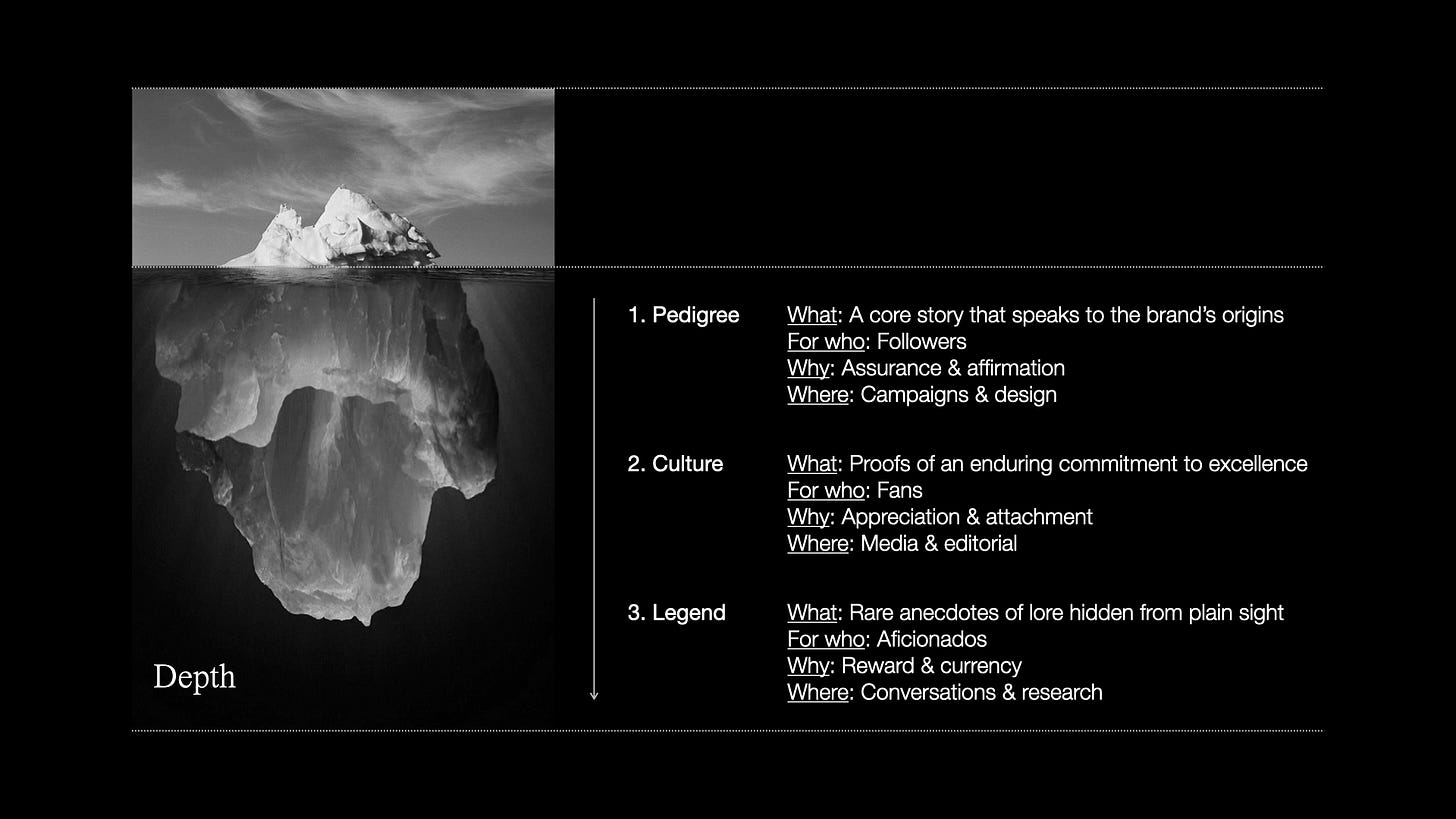Luxury brands are a curious dichotomy.
They’re complex, narrative rich entities, full of lore which, over time, builds their stature in consumers’ minds. But at the same time, as brands, they also appear very simple – a word, a monogram, or even a single colour.
In that sense, luxury brands are sort of like icebergs: an identifiable surface that hides layers of complexity below it.
This dynamic of surface-to-depth can be used to help organise a luxury brand’s identity and story – with the ‘depth’ component explaining which kinds of narratives the brand should tell when and where.
It’s an increasingly important consideration as today’s fans and followers have greater hunger for knowledge about their favourite brands. As the most recent High Snobiety ‘Luxury 3.0’ report states: “Knowing has become the new owning, with consumers looking towards brands to create communities and worlds with storytelling.”
I also tend to think that a key characteristic true of all luxury brands, is that the more you scratch their surface, the more you will be impressed by what’s revealed. Using the iceberg analogy, those impressive brand stories and anecdotes are placed exactly where they need to be, poised to be revealed at the right moment.
So, what does the iceberg framework look like? And what might happen at each layer?
Surface level – Identity
The surface is the singular, visual identity of the brand that cuts through the noise of social feeds and busy shopping streets. These manifest in the brand’s visual language – its name, logo, monogram, colour palette, and other signature product features. It aims to elicit instant familiarity and recognition; it is a beacon for the brand, identifiable from even the slightest interaction.
Depth level 1 – Pedigree
This is the primary – and often the original – story behind the brand, and the reason the brand deserves its illustrious position within the world of luxury. They are known by many and are usually the first story of provenance discovered by new fans and customers – rooting the brand in a place and past. They are continually celebrated, ever-present in brand activity, acting as the thread that weaves together brand campaigns season after season. Examples include: Louis Vuitton’s contributions to the art of travel; Hermès’ equestrian heritage; or the St. Regis’ celebrated origins in New York hospitality.
Depth level 2 – Culture
These are narratives around the brand’s commitment to excellence, the detail of the internal culture and production methods that enable the brand to achieve its high standards. They’re revealed slightly deeper into the brand than the pedigree, celebrated within one-off social campaigns, special product lines, or installations within flagship stores. They are the stories that make existing customers fall in love with the brand, building an emotional connection based on respect and admiration for the ingenuity and craft that goes into the brand. Examples might include Aesop’s dedication to bespoke design in each store, which has been elegantly catalogued through its Taxonomy of Design website. Another might be Brunello Cucinelli’s stories surrounding its place of production – its beautiful Italian village and the fascinating working culture it has built for its artisans.
Depth level 3 – Legend
These are the rare anecdotes about specific aspects of the brand – the ingredients that offer glimpses of true lore. They form valuable currency for the brand’s biggest fans, who crave this knowledge to impress peers within dedicated clubs and Discord channels. These insights are deliberately obscured from plain sight, not publicised by the brand, aiming to elicit reward and accomplishment in those who have made the effort to uncover them. They are clever ‘Easter eggs’, carefully planted within one-to-one conversations with the brand’s staff, or maybe found as delightful insights during podcasts with brand leaders or discussion panels with industry experts.




